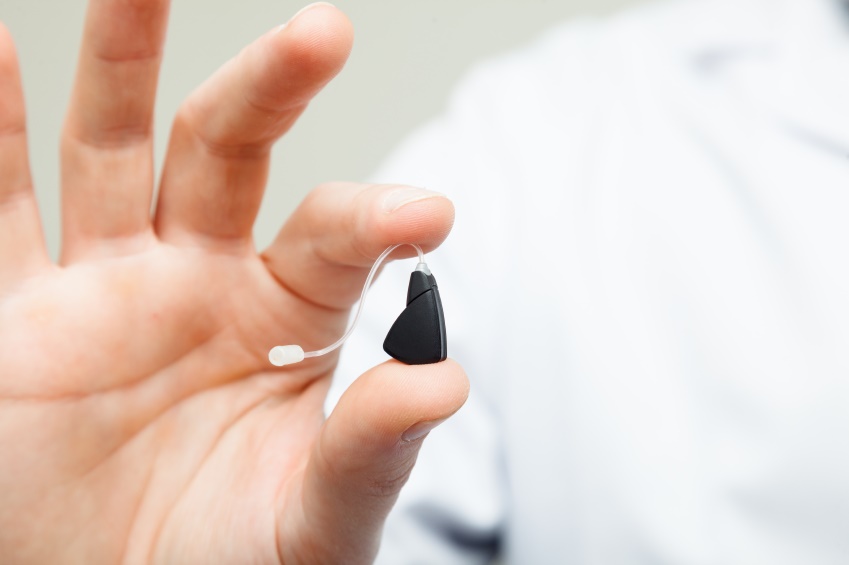
Hearing aid guides are not hard to find, but most are not exactly reader-friendly, either. Most are generally too lengthy or complicated, generating more confusion rather than less.
My guess is that you’re a great deal less interested in the physiology of hearing or in the ins and outs of acoustical engineering and a lot more interested in locating the most suitable technology at an acceptable price. Your objective is to hear better, not to read a 20-page manual.
If that describes you, then you’ll benefit from this concise guide to hearing aids. We’ll cover four small parts, and when we’re done, you’ll be ready to work with your hearing care professional to discover the technology that’s best for you. Let’s get started.
How All Hearing Aids Work
Choosing a hearing aid can feel overwhelming—there are a number of brands and seemingly endless considerations. But it’s really not as complicated as it seems. As you move on through this guide, bear in mind that all digital hearing aids work essentially the same way, and include these four fundamental parts:
- The microphone registers environmental sound and delivers it to the digital processor.
- The digital processor modifies the sound signal based on the settings programmed by the hearing specialist. The customized sound signal is then directed to the amplifier.
- The amplifier increases the volume of the sound based on the programmed settings, amplifying only the frequencies the individual has difficulty hearing (while suppressing background noise). This signal is then delivered to the speaker.
- The speaker delivers the magnified sound to the ear, producing louder, clearer sound.
Additionally, all hearing aids contain a battery, volume and setting buttons, and remote controls.
Hearing aids really only differ in two very important ways: 1) style, and 2) advanced features. We’ll address these in the next two sections.
Hearing Aid Styles
You have your choice of three principal styles:
1. Behind-the-ear (BTE) hearing aids hook over the top of the ear and rest behind the ear. The case is then attached to an earmold in the ear canal by a piece of clear tubing. BTE hearing aids are simple to handle and clean, normally have an extended battery life, and can manage severe hearing loss.
2. In-the-ear (ITE) hearing aids occupy the outer part of the ear with a custom-molded shell. ITE hearing aids are smaller than the behind-the-ear hearing aids but larger than the in-the-canal styles. This renders ITE hearing aids easier to handle than the smaller styles but less conspicuous than the BTE style.
3. In-the-canal (ITC) hearing aids and completely-in-the-canal (CIC) hearing aids fit partly or completely inside of the ear canal, making them almost or completely invisible. ITC and CIC hearing aids are custom molded to the shapes of the ear, and some can be worn for several months at a time.
When choosing a style, weigh the tradeoffs among simplicity of use, battery life, and concealment. Your hearing care expert will help you prioritize your preferences and pick the most appropriate style.
Hearing Aid Advanced Features and Accessories
After you’ve decided on the most suitable style, you can identify which of the following features you need—and which you don’t.
- Directional microphones enable you to concentrate on the sounds and conversations directly in front of you while decreasing the interruption of loud background noise.
- Telecoils, or T-coils, allow you to talk on the phone while decreasing the static caused by background noise.
- Environmental noise control allows you to enhance hearing based on your environment, for example in a quiet room at home versus in a chaotic restaurant.
- Direct input to sound sources such as televisions, radios, computers, and music players allow for clear sound without background noise.
- Wireless connection to mobile phones turns your hearing aids into top-quality wireless headphones. The hearing aid settings can be manipulated from your phone (or digital watch), and sound can be wirelessly streamed straight from the phone to the hearing aids.
Optional accessories include cleaning kits, storage cases, ultraviolet sanitizers, battery-changers, and more. Your hearing care professional can help you decide on which you may need or want.
Choosing the Right Hearing Aids
Before making an investment in hearing aids, take these four steps:
- Find a trustworthy, local hearing care professional. Only professionals with adequate experience can evaluate your hearing accurately, which is crucial for when it comes time to program, fit, and calibrate your hearing aids.
- Discuss hearing aid styles and advanced features. Your choice of hearing aids will depend on your preference of style and functionality. Explore these two factors with your hearing expert and your options will become manageable.
- Set a budget. Some would say that your hearing is priceless, but that doesn’t mean you have a limitless budget. With all of the hearing aid options available to you, you and your hearing professional can uncover the right hearing aid at an affordable price.
- Try out your new hearing aids. Ask about trial periods and test out your new hearing aids. Talk with your hearing specialist to set sensible expectations and give your hearing aids an opportunity to perform well. Your perseverance will be paid back when you realize the difference better hearing will make in your life.
And that’s it. What might appear to be a complex process is in fact easily workable, once you understand how to prioritize your needs and limit your choices. With the assistance of your local hearing care professional, you can obtain the ideal technology at the right price—so you can start taking pleasure in all of the benefits of better hearing.

